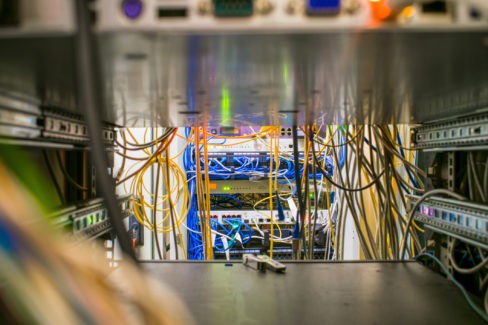July 2, 2014
As more and more customers are faced with the task of designing or refreshing their current Data Center or MDF Route/Switch core, it’s important to future proof your decision based on what we know today. Answering a series of key design questions will help you select the correct technology for your business.
Some of these key design questions revolve around:
- whether it’s critical that your new core has the ability to support a unified fabric
- 10GB port density requirements
- 40Gb requirements
- certified reference architectures
- understanding the technical differences between VSS/vPC
In this blog post, I will address each of these areas in terms of why they are important and how they will ultimately drive your Route/Switch Core decision.
What are some of the technical differences that you need to consider when choosing between the Nexus line and the Catalyst line for your Data Center core?
- The Nexus line is typically a better choice when you need a high amount of 10GB port density and you need all of those ports to support the full line rate. In other words, no oversubscription. There are a lot of 10GB offerings in the Catalyst line as well, but customers often overlook the oversubscription factors. For instance, some Catalyst 16 port 10GB blades have a 4:1 oversubscription, which means that, cumulatively, the module itself will only have an available throughput of 10GB across the first four ports.
- The Nexus line offers the concept of virtual device contexts for providing logical layers of separation within the Nexus switch. Each VDC basically take a physical Nexus and divides it up into multiple logical switches that are on separate data planes. In other words, there is no way that the ports on VDC would be able to talk to the ports on VDC B without physically connecting a cable between the ports that are part of each domain. A thing to note is the fact that each VDC requires its own vPC domain and peer-link, peer-keepalive cables, and at least 8GB of RAM is recommended to run VDCs.
- With the Nexus line there is a complete control Plane and forwarding Plane separation. This means that the forwarding decisions are made in the ASICS of the line cards themselves; while control plane is specifically only used to run the operating system and manage the system itself. The Catalyst 6500 can support both centralized forwarding (where the supervisor makes the forwarding decision) or distributed forwarding (where the line card makes the forwarding decision).
- The Nexus line has the ability to offer 100Gb/40Gb/10Gb/1Gb line cards.
- The Nexus line has the ability to offer Fabric Extenders, which are essential devices that act as remote line cards from a parent Cisco Nexus switch. These fabric extenders are essentially just extensions of the parent Nexus switch, thereby allowing a single unified fabric to manage the entire infrastructure in the data center.
- The Nexus line is the only true Unified fabric switch, meaning that it is both a LAN switch as well as a SAN switch. This is the only Cisco switch that has the capability to support traditional native FibreChannel/FCOE and typical route/capabilities on the same physical switch. This is actually a technical requirement of the very popular FlexPod or Vblock certified reference architectures.
- The Nexus line offers the ability to perform ISSUs (In Service Software Upgrade) for minor revisions to the Nexus OS.
Understanding the differences between VSS and vPC
As the need for redundancy, resiliency, and performance continue to be a critical aspect of any data center route/switch design, I often am asked to explain the technical differences between Cisco’s Virtual Switching Supervisor (VSS/MEC) on the Catalyst platforms and Cisco’s Virtual Port Channel (vPC) on the Nexus platforms. In the traditional port channel model, link aggregation was only possible to a single device. Multichassis Etherchannel (MEC) and Virtual Port Channel are two new port channel concepts that extend link aggregation across two physical switches. MEC and vPC address network connectivity challenges where link aggregation connectivity across two devices is required.
Major benefits VSS and vPC bring to network designs: Route/Switch
- Utilizes all available uplink bandwidth
- Allows the creation of resilient Layer 2 topologies based on link aggregation
- Eliminates the dependence of Spanning Tree Protocol in Layer 2 access distribution layer(s)
- Enables transparent server mobility, server high available (HA) clusters
- Scales available Layer 2 bandwidth
- Simplifies network design
- Dual-homed servers operating in active-active mode
- Provides faster convergence upon link failure
- Improves convergence time when a single device fails
- Reduces capex and opex
Nexus Virtual Port Channel (vPC) Details
- Allows for Spanning Tree elimination through L2 convergence on vPC.
- Nexus does not rely on a unified control plane like Catalyst VSS so both switches operate independently. Because of this L3 multi-chassis ether-channel is not supported like in VSS and for L3 High availability HSRP or another router high availability redundancy protocol will need to be used.
- Multiple management IP addresses to manage the pair of Nexus switches in a vPC pair.
Catalyst Virtual Switching Supervisor (VSS) Details
- VSS mode, a Catalyst 6500 feature, allows a pair of Catalyst 6500s to be joined together into one logical switch with a unified control plane. Thus no need for HSRP and Spanning-Tree calculation/elimination. The unified control plane aspect of VSS mode allows for the full system capabilities to be used on a multi-chassis Ether-Channel, so L3 Ether-Channels, MPLS awareness, full QoS capabilities, and other features are usable across both of the system.
- Single IP address to manage both chassis.
Like what you read?
About Mindsight
Mindsight, a Chicago IT consultancy and services provider, is an extension of your team. Our culture is built on transparency and trust, and our team is made up of extraordinary people – the kinds of people you would hire. We’ve always prided ourselves in delivering the full spectrum of IT services and solutions, from design and implementation to support and management. Our highly-certified engineers and process-oriented excellence have certainly been key to our success. But what really sets us apart is our straightforward and honest approach to every conversation, whether it is for a local business or global enterprise. Our customers rely on our thought leadership, responsiveness, and dedication to solving their toughest technology challenges.


 MPLS is most well-known for the reliable delivery of packets and overall quality of service, especially for VoIP and other real-time protocols. There is also a greater degree of control over MPLS network traffic. MPLS providers predetermine network traffic priority levels and optimize routes, which brings predictability and reliability to the network.
MPLS is most well-known for the reliable delivery of packets and overall quality of service, especially for VoIP and other real-time protocols. There is also a greater degree of control over MPLS network traffic. MPLS providers predetermine network traffic priority levels and optimize routes, which brings predictability and reliability to the network.
 SD-WAN disrupts the traditional architecture, so the conversation around pros and cons is a bit different. Broadly, SD-WAN leads to increased scalability, performance, and security. SD-WAN is dynamic and makes managing traffic flow much simpler.
SD-WAN disrupts the traditional architecture, so the conversation around pros and cons is a bit different. Broadly, SD-WAN leads to increased scalability, performance, and security. SD-WAN is dynamic and makes managing traffic flow much simpler.

